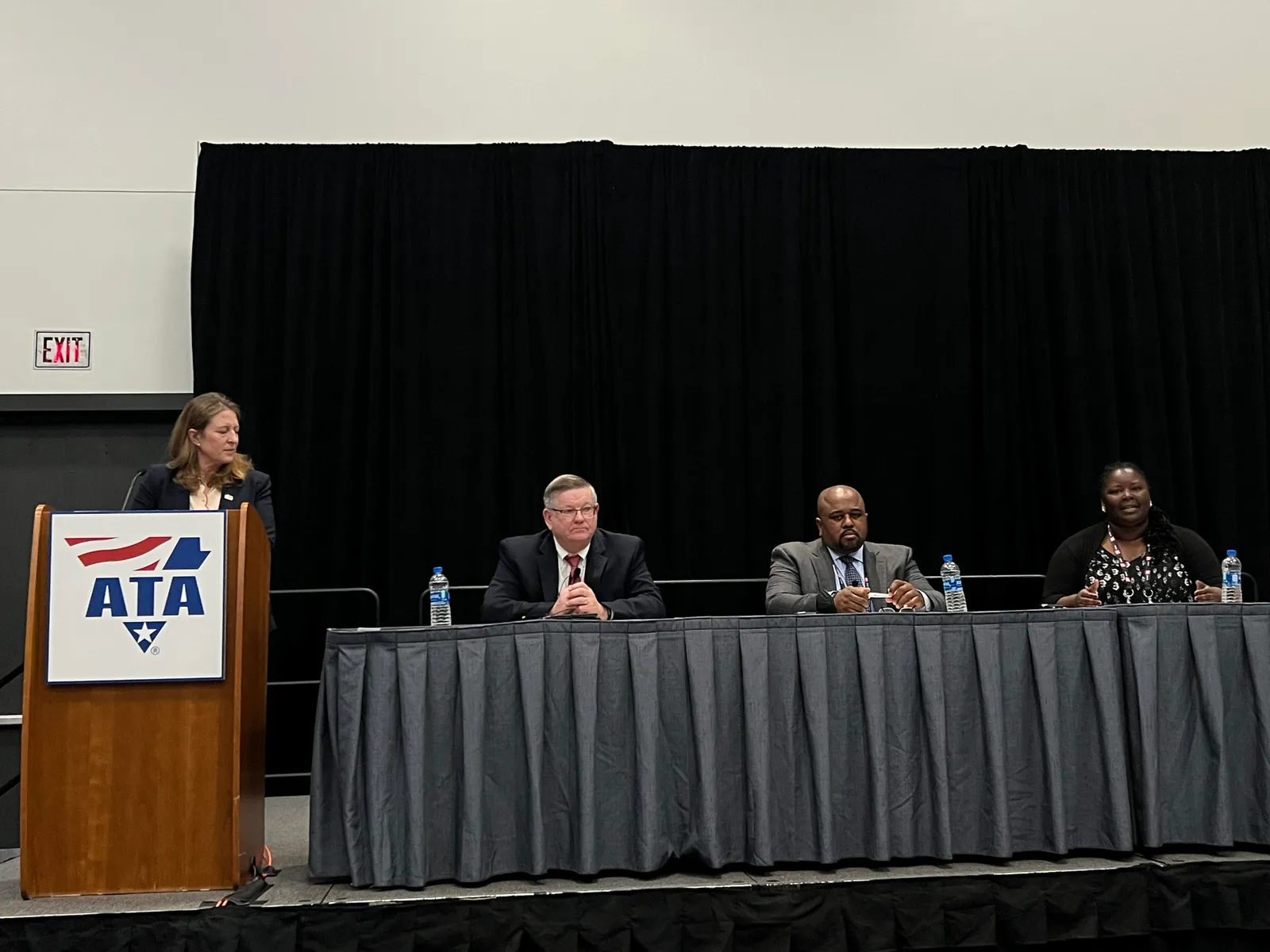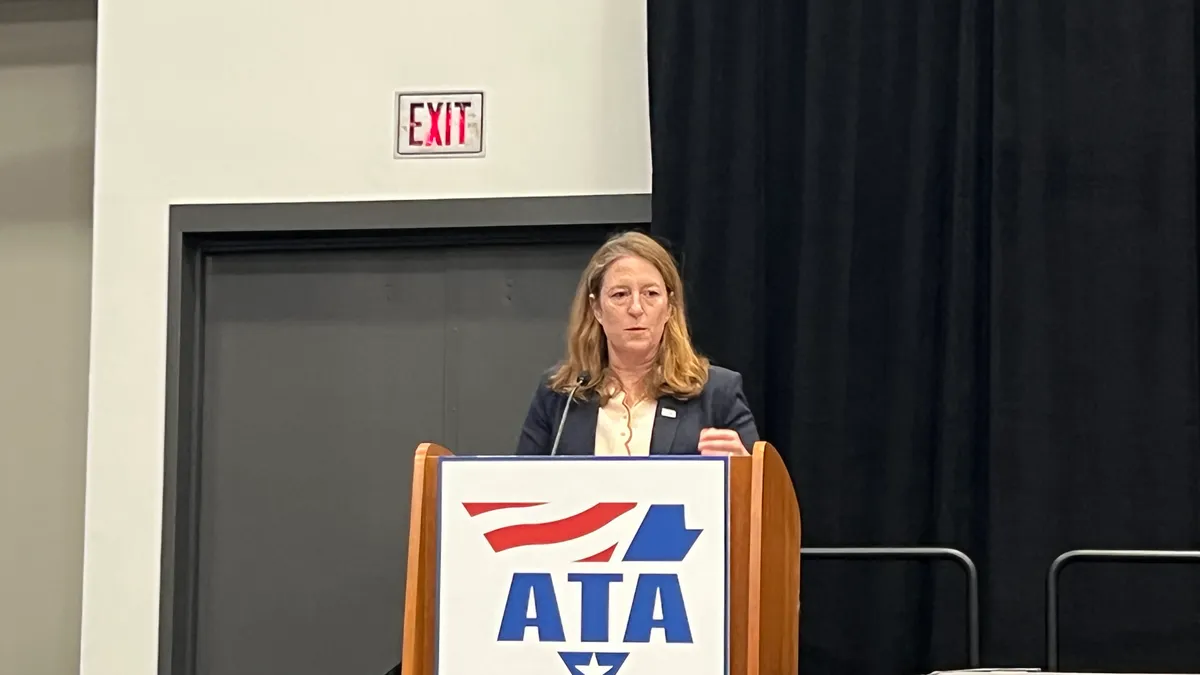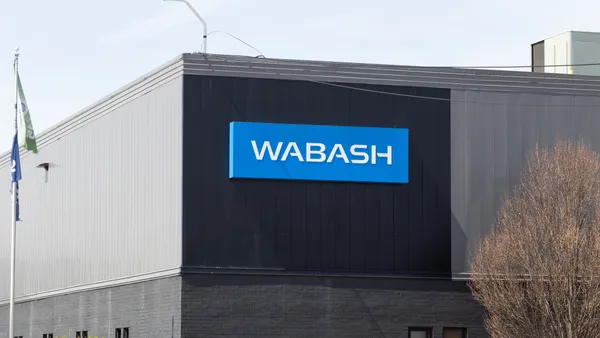SAN DIEGO — FMCSA head Robin Hutcheson told American Trucking Associations members Saturday about riding with a driver in Wisconsin, getting under a truck to see an inspection firsthand, and grazing just one rubber duck at this year’s National Truck Driving Championships.
The industry’s chief safety regulator, who was confirmed in September as the FMCSA’s first permanent leader in three years, shed light on some of her priorities for the agency — namely safety, equity and technology — during remarks at the 2022 ATA Management Conference & Exhibition.
Hutcheson is taking the helm at the FMCSA as the trucking industry grapples with higher costs and more pressure to meet sustainability goals and recruit the next generation of drivers. But she is set to oversee the FMCSA’s investments of a large influx of cash: The Bipartisan Infrastructure Law provided millions in funding to the agency.
“We have those goals laid out in front of us,” Hutcheson said, “and we also now have policy resources to back up our mission with action.”
A pursuit of improved safety and equity
The Bipartisan Infrastructure Law gives the FMCSA the authority to provide new grants meant to fund training and safety efforts. Investments will be guided by the National Roadway Safety Strategy, the Biden Administration’s strategy to achieve zero roadway deaths. U.S. Transportation Secretary Pete Buttigieg, who developed the strategy, is scheduled to speak at the MCE conference Tuesday.
Hutcheson said truck parking and harassment of women drivers are among the top safety challenges she wants to address.
A lack of adequate truck parking, which drivers ranked as their top issue for the third straight year in the American Transportation Research Institute’s Critical Issues in the Trucking Industry report, is another concern shared by the FMCSA because of the safety and security issues it creates, she said. The Department of Transportation announced $40 million in truck parking grants in Florida and Tennessee this month.
“Drivers need rest,” Hutcheson said. “When drivers can't find an appropriate place to park ... they park where they can. Maybe a highway shoulder, it might be a freeway exit. It might be an exit ramp, a vacant lot, or the streets.”
Hutcheson is also focused on encouraging more women to join the trucking industry and addressing some of the barriers that have hindered recruitment, including harassment.
Among the FMCSA’s infrastructure law-funded initiatives is the Women of Trucking Advisory Board, which will hold its inaugural meeting next month, Hutcheson said. The panel will support women pursuing trucking careers through scholarships, trainings, mentorship, education and outreach programs.
“Equity is a priority,” she said. “We keep hearing the same stories, how hard it is to raise a family while driving a truck. We’ve heard about safety issues from women, including sexual violence and harassment. It keeps women from working as drivers. We’re very hopeful for the work of this first-of-its-kind board for DOT.”

Investments will start with technology
The FMCSA is also expected to take an active role in regulating burgeoning technologies, such as autonomous vehicles. The agency plans expeditious rulemaking to provide federal guardrails for the industry on AVs, Chief Counsel Earl Adams Jr. said during an FMCSA Q&A session after Hutcheson’s remarks.
Beyond AVs, the agency is also focused on tech that could make trucks safer on roads. Hutcheson said she witnessed the potential of automatic emergency braking during a truck ride-along last week, and the FMCSA’s infrastructure funding investments will include harnessing safety technology.
The FMCSA’s first Large Truck Crash Causal Factor Study in 15 years will help, too, according to Executive Director and Chief Safety Officer Jack Van Steenburg. In addition to police reports, federal inspections and post-crash interviews with drivers and witnesses will allow the regulator to more deeply investigate crash causes and problem areas.
Hutcheson said the agency’s push to close loopholes and remove unsafe drivers from the road “starts with an investment in technology on our part.”













